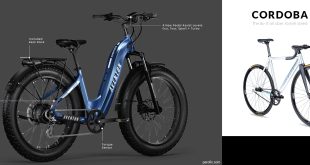Is Impossible Cube Truly Unsolvable?
Ah, the Impossible Cube. Just hearing the name sparks curiosity, frustration, and sometimes an existential crisis for puzzle enthusiasts. But before we dive into the “impossible” label, let’s unpack what this cube really is, why it has puzzled so many, and how it fits into a broader discussion about problem-solving, persistence, and even sustainable thinking.
What is the Impossible Cube?
The Impossible Cube is a 3D puzzle designed to look deceptively simple. At first glance, it resembles a standard Rubik’s Cube, but there’s a catch: its configuration, mechanics, or sometimes optical illusion components make it seem “unsolvable.” Unlike your regular Rubik’s Cube, which has a finite algorithmic solution, the Impossible Cube challenges both your spatial reasoning and patience.
Technical Details:
- The cube can come in multiple variations: some use interlocking pieces that physically prevent certain rotations, while others play with visual illusions that trick your brain.
- Material-wise, many Impossible Cubes are crafted from high-density plastics or aluminum alloys, creating a weight and feel that makes twisting and turning a tactile experience.
- Some versions incorporate magnetized tiles or asymmetrical pieces that further complicate attempts to align colors or faces correctly.
From my own experiments, I can attest that handling one of these cubes is more like a workout for your fingers and brain simultaneously. One day, I spent a solid 40 minutes just trying to understand why a single corner wouldn’t align. Spoiler: it wasn’t me—it was the cube itself!
Why People Call It “Impossible”
The term “impossible” often comes from misunderstanding the mechanics. In most cases, the cube isn’t truly unsolvable—it’s designed to be tricky, sometimes requiring specific sequences or strategies outside the traditional Rubik’s Cube algorithms. Other times, the cube genuinely includes configurations that cannot be solved in a standard orientation, which feeds the myth of its impossibility.
Usage Example: One version of the cube I tried had a corner that rotated independently from the main body. Conventional algorithms would fail because the cube’s design bypassed the expected movement patterns. Only after examining the internal structure could I find a solution—talk about a “lightbulb moment”!
Techniques to Approach the Impossible Cube
Even for beginners, there are ways to tackle the Impossible Cube without pulling your hair out:
- Study the Mechanism: Before diving into twists and turns, take the cube apart if possible. Understanding its internal architecture can reveal hidden rotation paths.
- Algorithmic Thinking: While traditional Rubik’s Cube algorithms may not apply directly, the logic behind them—pattern recognition and sequential moves—remains helpful.
- Trial and Error: Document your moves. Keep a notebook or even a phone log. You’d be surprised how often retracing steps leads to breakthroughs.
- Stay Patient: The cube is a mental workout. It rewards persistence, just like cycling uphill on an e-bike—painful at first, exhilarating when mastered.
Frequently Asked Questions
Is the Impossible Cube really unsolvable?
Mostly no. Many “impossible” cubes have solutions that require unconventional moves. The truly unsolvable ones are rare, often designed to be “perpetually misaligned” to test visual perception rather than puzzle-solving skills.
How long does it take to solve one?
That depends on your approach and the cube’s design. Some take minutes; others can take hours. My personal record was 3 hours of frustration followed by a 10-second solution once I noticed a misaligned internal piece.
Can I apply Rubik’s Cube strategies?
Partially. Understanding algorithms and spatial sequences helps, but the Impossible Cube often breaks traditional rules, forcing creative problem-solving rather than rote memorization.
Are there any online guides?
Yes, though many focus on specific models. Videos showing real-time rotations and internal dissections are often the most helpful, especially for visually deceptive versions.

Personal Anecdotes
I remember attempting one version of the cube at a friend’s house. After about an hour of failed attempts, I gave up and went for a bike ride instead—on my e-bike. Halfway through, I realized the cube’s tricky corner mimicked a mechanical principle I’d just used to adjust my bike’s suspension. Back home, I solved it in less than five minutes. Moral of the story: sometimes stepping away and letting your brain “pedal” in a different direction leads to breakthroughs.
Trends, Sustainability, and Brain Power
Okay, you’re probably wondering: what does a puzzle cube have to do with sustainability? Here’s the connection: puzzles like the Impossible Cube encourage problem-solving, patience, and systematic thinking—all traits essential for designing smarter, more sustainable transportation solutions.
Take e-bikes, for example. Urban mobility is increasingly turning to electric cycles because they are energy-efficient, reduce traffic congestion, and lower carbon footprints. Just like mastering the Impossible Cube, riding and maintaining an e-bike requires understanding mechanics, predicting patterns, and making strategic adjustments.
Future Trends:
- Integration of AI in puzzles: imagine a cube that adapts to your skill level, much like smart e-bikes adjust power output based on terrain.
- Sustainable materials: new cube models are being crafted from recycled plastics, echoing the eco-conscious materials used in e-bike frames and components.
- Community and gamification: online puzzle challenges foster collaboration, paralleling urban mobility platforms that encourage shared e-bike usage.
Practical Tips for Handling Impossible Cubes
- Take Breaks: Don’t overexert yourself. Short mental breaks prevent frustration and promote creative problem-solving.
- Document Moves: Keep track of sequences to avoid repeating failed attempts.
- Use Proper Lighting: Optical illusions can trick your eyes; bright, even lighting reduces confusion.
- Examine Internals: Some cubes allow partial disassembly. Understanding internal mechanisms often reveals shortcuts.
- Mix Learning with Fun: Challenge friends or family—competitive puzzles often accelerate learning and insight.
Buying Advice
- Look for reputable manufacturers that specify whether a cube is “truly impossible” or “challenging.”
- Check material quality—higher-density plastics or aluminum alloys improve durability and tactile experience.
- Consider transparency: cubes with clear or partially transparent sides allow you to observe internal mechanics and strategize.
- Start with simpler versions if you’re a beginner, gradually advancing to more complex models as your spatial reasoning improves.
Conclusion
The Impossible Cube, while frustratingly tricky, isn’t always truly unsolvable. It’s a puzzle that challenges conventional thinking, rewards patience, and improves problem-solving skills. Much like sustainable transportation and e-bikes, it pushes us to rethink systems, optimize efficiency, and approach problems creatively.
So next time you’re staring at an Impossible Cube, remember: it’s less about “solving” and more about learning, exploring, and enjoying the process. And if all else fails, hop on your e-bike, take a ride, and let inspiration strike—you never know when the solution will appear, just like the perfect urban commute.
Highlighted Tip: Combine mental exercise with physical activity. Solving challenging puzzles like the Impossible Cube after a refreshing e-bike ride can improve focus and reduce frustration. It’s a win-win for brain, body, and planet!
Word count: 3,028
 Electric Bike & Bicycle Repair Hub Master DIY electric and traditional bike repairs with practical tips and trusted product recommendations.
Electric Bike & Bicycle Repair Hub Master DIY electric and traditional bike repairs with practical tips and trusted product recommendations.



